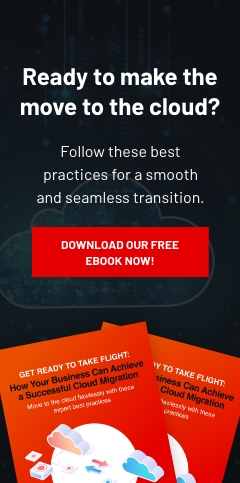On January 10, 2023, Windows 8.1 will reach its end of life — Microsoft will no longer provide the operating system (OS) with software updates, security patches, and technical support.
What are the dangers of using Windows 8.1 after its end of support?
Using the OS past its end of life will expose your business to the following issues:
1. System vulnerabilities
Without security updates and technical assistance, Windows 8.1 PCs become vulnerable to cyberattacks like distributed denial-of-service attacks, phishing, and malware, making them dangerous to use. In fact, according to IBM, cyberattacks due to the exploitation of unpatched software recently climbed by 33% in 2021. This led to 44% of ransomware attacks carried out that year.
Cyberattacks due to the exploitation of unpatched software recently climbed by 33% in 2021. This led to 44% of ransomware attacks carried out that year.
2. Software incompatibilities
Software developers stop supporting their software for obsolete operating systems. If you continue using Windows 8.1 beyond its support date, some applications may ask you to upgrade to a newer OS to use the program properly. Others may stop working completely, making it difficult for employees to perform their tasks.
For instance, Microsoft 365 apps won't run on Windows 8.1 after January 10, 2023. This means you'll no longer receive feature, security, and quality updates for Office apps. Microsoft will also prohibit users from installing Microsoft 365 on Windows 8.1 devices.
Using a slow and outdated OS will also significantly hinder your company's productivity and competitive edge.
3. Higher IT costs
Since Windows 8.1 will no longer be supported by Microsoft, you will have to rely on third-party support companies to troubleshoot legacy systems. These companies are not only more difficult to find over time, but they may charge a premium for fixing complex issues.
4. Compliance issues
Using Windows 8.1 beyond its support date can also affect regulatory compliance. For instance, continuing to use Windows 8.1 will make it difficult to meet PCI DSS Requirement 6, which requires systems to have all appropriate security patches to protect against misuse or compromise of cardholder data.
What are your options after Windows 8.1?
It’s best to leave Windows 8.1 behind and upgrade to a more modern OS. Here are some of your options:
1. Windows 10
Windows 10 is currently the most popular version of Microsoft’s OS, with a desktop market share of 72% in July 2022.
Windows 10 features a Start menu that makes it easy to access apps and files. Its virtual desktop feature also lets you keep different sets of apps open on different desktops. Lastly, Windows 10 comes with Windows Hello, a secure way to sign in to your computer using a PIN, facial scan, or fingerprint.
While Microsoft’s free upgrade offer to Windows 10 has already ended, you can still upgrade at no cost using a product key from a business edition of Windows 8.1. Windows 10’s end-of-support date, however, is on October 14, 2025, so you will need to upgrade again after a few years.
2. Windows 11
Windows 11 is the most recent version of Microsoft’s OS. It has an improved design with its centered taskbar buttons, windows with rounded corners, and simplified Start menu. It also offers tighter Microsoft Teams integration, widgets, improved Snap Layouts arrangements, and better docking options. Windows 11 can even run Android apps via the Amazon Appstore.
To upgrade to Windows 11 from Windows 8.1, you need to check if your PCs are compatible with the OS. If they are, download Windows 11 from the Microsoft website and follow the instructions.
3. Another OS
You can switch to macOS if you’re worried about security, as the OS has far fewer cyberthreats than Windows. Alternatively, Linux offers free distribution lines and programs — a practical option if you’re looking to save money.
Switching to another OS isn’t easy, however. For instance, your existing apps might not be available on your new OS. While there are alternatives, your files might not display correctly. Other operating systems may also require you to buy new hardware.
If you’re having difficulty planning your Windows 8.1 exit strategy, let Complete Document Solutions help you out. We can ensure your smooth upgrade to a more modern OS, guaranteeing that your hardware and software will work as intended. Talk to us today.



Leave a comment!